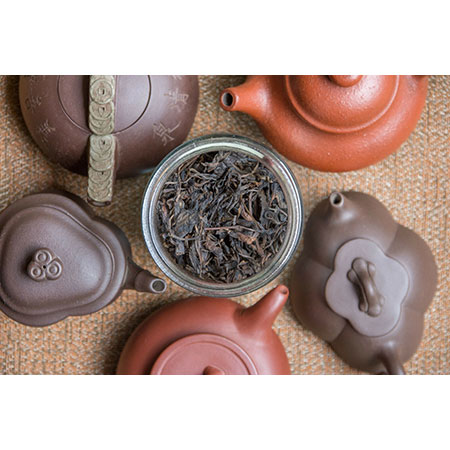Fully Fermented Tea -2
| Item No.: | 5-2 |
Supplier Details
Country: Taiwan
City: Nantou County 555
Address: No.1-28, Xiangcha Ln., Yuchi Township
TEL: +886-49-2898189
Fax: +886-49-2898792

Online Showroom:
32 Products
The black tea soup is bright and bright, and the taste is sweet and sweet. It is more suitable for drinking in winter. It is quite complicated to talk about its production process. There is a key step - fermentation.
Fermentation, the enzymes in tea continue to promote the oxidation of polyphenols, so that the tea leaves from green to red, while forming a large number of different aromatic substances, in order to lay the tone of the black tea aroma.
After the withering, the tea leaves are still green, but they will be slightly red. Stack it in a fermenting dish (such as a bamboo basket), cover it with a moist fermenting cloth, and put it in a warm fermentation room. The temperature in the fermentation room is generally maintained at 25~30°C and the relative humidity is over 90%. During this time, The biological enzymes in the tea begin to form, and they will try to convert the polyphenols into theaflavins, thearubigins, etc., so that the tea leaves are red. Therefore, after the fermentation is completed, the color of the leaves becomes yellowish red; if the fermentation is good, there will be ripe apples.
Fermentation, the enzymes in tea continue to promote the oxidation of polyphenols, so that the tea leaves from green to red, while forming a large number of different aromatic substances, in order to lay the tone of the black tea aroma.
After the withering, the tea leaves are still green, but they will be slightly red. Stack it in a fermenting dish (such as a bamboo basket), cover it with a moist fermenting cloth, and put it in a warm fermentation room. The temperature in the fermentation room is generally maintained at 25~30°C and the relative humidity is over 90%. During this time, The biological enzymes in the tea begin to form, and they will try to convert the polyphenols into theaflavins, thearubigins, etc., so that the tea leaves are red. Therefore, after the fermentation is completed, the color of the leaves becomes yellowish red; if the fermentation is good, there will be ripe apples.
 English
English
 中文繁體
中文繁體 Русско
Русско Deutsch
Deutsch Español
Español Português
Português Français
Français Türk
Türk Italiano
Italiano Nederlands
Nederlands हिन्दी
हिन्दी Bahasa Indonesia
Bahasa Indonesia Tiếng Việt
Tiếng Việt
